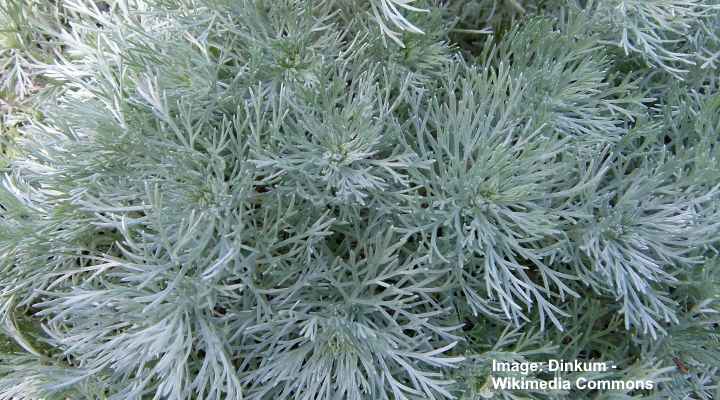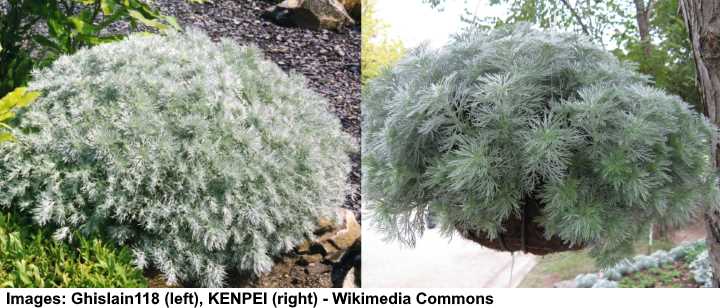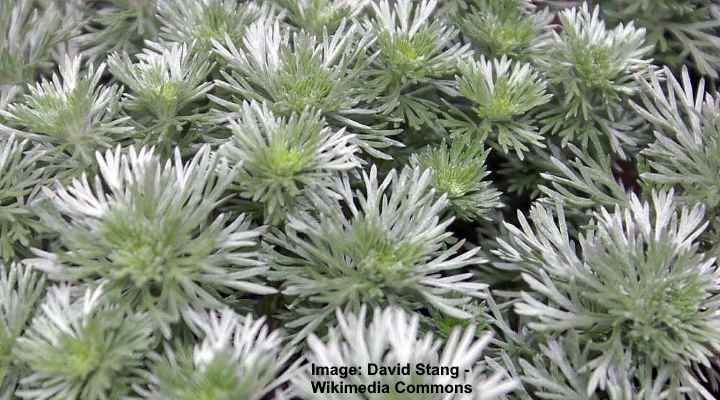Silver Mound Care: Growing Silver Mound Artemisia (Artemisia Schmidtiana ‘Silver Mound’)

Silver mound (Artemisia schmidtiana ‘Silver mound’) is a perennial shrub with fine silvery-green needle-like leaves that create a silky mound of soft foliage. The silver mound plant is ideal in a landscape as a low-growing spacer, framing, ground cover, or edging plant. Sometimes just called artemisia, the silver mound is mat-forming clumping plant that is easy to care for as it grows in most soils, and requires little watering.
The beauty of growing silver mound artemisia is that it thrives where other plants fail. You can grow silver mound in non-fertile sandy soil or clay, nutrient-rich soil. Once established, the plant is drought tolerant, even when growing in full sun. Planting silver mound is a great way to cover bare ground and improve your garden’s appearance.
This article is a complete guide to growing silver mound artemisia in your garden. In addition to helpful care tips, you’ll find advice on resolving various issues with the plant’s growth.
How to Care for Silver Mound Artemisia
To care for silver mound artemisia, grow the clumping plant in full sun where the ground is well-draining. Only water silver mound when the soil is dry. For healthy growth, it’s best to prune silver mound in early spring. Artemisia grows well without additional fertilization.
About Artemisia schmidtiana ‘Silver Mound’

Silver Mound Artemisia is a low growing perennial plant with silvery green feathery leaves
Silver mound is a flowering, low-growing mat-forming perennial in the genus Artemisia and family Asteraceae. Silver mound is native to Japan, but it is grown worldwide as a cold-hardy ornamental landscaping plant. Although silver mound blooms, its flowers are insignificant.
Silver mound artemisia is cold hardy in USDA zones 4 through 8. In some zone 4 areas, silver mound needs extra protection during winter. However, these clumping foliage plants perform well throughout winter.
Silver mound artemisia plants look like soft pillows of silvery-green feathery foliage. The tufts of leaves form a rounded mound that grows up to 10” (25 cm) tall and 16” (40 cm) wide. The plant is grown for its delicate foliage and mat-forming growth rather than its flowers.
Artemisia schmidtiana has a medium to fast growth rate and grows for up to ten years in most conditions.
Silver mound also has common names such as wormwood, angel’s hair, silver mound wormwood, and dwarf Schmidt wormwood.
From the other plants in the genus Artemisia, silver mound is the only one that grows horizontal shoots (prostrates) along the ground that may take root.
Artemisia schmidtiana ‘Nana’ (Wormwood)

Artemisia ‘Nana’ is a compact cultivar that looks great in the garden or in hanging basket
Artemisia schmidtiana ‘Nana’ is a semi-evergreen perennial with soft silvery leaves that look like delicate green coral. Also called wormwood ‘Nana,’ this is a compact cultivar. This low-growing plant grows between 3” and 6” (7.5 – 15) tall and has a spread up to 12” (30 cm). Like the silver mound, this hardy plant thrives in full sun, and poor soil and only needs occasional watering.
Silver Mound Artemisia Flowers

The small flowers of Silver Mound Artemisia are insignificant
Silver mound artemisia produces small whitish-yellow flowers that usually appear in June. Silver mound flowers are sparse on the rounded plant and usually unnoticeable against the lush silvery foliage. Like most plants in the genus Artemisia, silver mound is grown for its feathery foliage rather than its flowers.
Where to Plant Silver Mound Artemisia in a Garden Landscape
Silver mound is a popular landscaping plant for front or backyards. The low-growing, spreading growth makes the soft cushion-like plant ideal as a space filler in any garden landscape. Its tolerance for poor soil and drought makes it a popular addition to city gardens.
Silver mound grows best as an edging or border plant. Its soft texture and silvery-green color contrast nicely with colorful flowering plants. Silver mound is an excellent choice to plant beside gayfeather, yarrow, purple asters, anise hyssop, or fragrant herbs.
Due to its low-growing nature and sun tolerance, silver mound is a popular pick for a ground cover plant in sunny gardens. Silver mound also grows well in rock gardens.
You can also easily grow silver mound in containers. The short, tufty plant grows well as a filler, and its delicate silvery leaves accent dramatic flowers.
Silver Mound (Artemisia schmidtiana) Care Guide
Let’s look in more detail at how to care for silver mound artemisia in your garden or containers.
Light Requirements for Growing Silver Mound

To care properly for Silver Mound Artemisia, grow it in the sunniest part of your garden
Silver mound artemisia grows best in full sun; however, it is tolerant of some shade. The silver foliage plant continues to thrive in hot, sunny weather, even if the ground isn’t fertile. Ideally, it would be best to plant silver mound plants where they get at least six hours of sunlight daily.
Silver mound is also ideal for growing in containers. You can place the potted foliage plants on your patio, deck, or balcony where they get the most sunlight. However, don’t worry if the area is partially shaded; silver mound adapts well to partial shade.
You may notice that its growth slows if the silver mound plant grows in continual shade. The feathery foliage may start thinning, and the stems can become leggy. If that’s the case, transfer the plant to a sunnier location. Alternatively, you can plant ground cover plants for shade in its place.
Best Soil for Growing Silver Mound Plants
Silver mound artemisia grows in almost any type of soil. The main soil requirement is that the ground has excellent drainage and doesn’t become too soggy. It doesn’t matter if the earth is clay and dense or sandy and loamy, silver mound will thrive if the roots never become waterlogged.
For best growth, a silver mound plant should grow in dry, moderately fertile soil. So, you can work in some compost to the ground in the spring to boost the nutrient content. However, as long as the ground is never always wet, you shouldn’t have any issues growing silver mound artemisia.
If you are growing silver mound artemisia in containers, it’s vital to get the potting mix right. Combine one part sphagnum peat moss and one part perlite to grow a potted artemisia. The combination of peat moss and perlite helps to retain some moisture without the soil becoming too soggy.
Related reading: How to create your own potting soil.
How to Water Silver Mound Artemisia
Silver mound plants grow well in dry soil and only need watering when there’s been no rain. This drought-tolerant perennial grows well in arid, summer heat with only occasional watering. If you decide to water the plant, only water it when the top 3” of soil is completely dry.
Silver mound artemisia is exceptionally susceptible to disease in overly-watered, poorly-drained soils. It’s essential to consider the soil type when watering these low-maintenance plants. For example, dense clay soil holds a lot of moisture. Therefore, you’ll only need to water the plant infrequently. However, growing in well-draining sandy soil means that you can water a silver mound plant more often.
As a rule, when it comes to watering silver mound, remember that “less is more.” Keep the soil on the drier side, rather than allowing it to stay continuously moist.
Silver mound is also an ideal ornamental foliage plant for xeriscape application or growing in a low-water garden. This xeric plant can last for a few weeks without much hydration. You can grow silver mound plants alongside dusty miller plants, bearded irises, black mondo grass, and coneflowers in xeriscape landscaping.
Temperature Requirements to Grow Silver Mound
Silver mound artemisia tolerates a wide range of temperatures growing in the ground. Cold-hardy to USDA zone 4, silver mound can survive temperatures as low as -30°F (-34°C)—albeit with extra protection. It also has excellent tolerance for heat, and even on hot sunny days, the sun doesn’t affect its foliage.
In warmer climates in zones 7 and 8, Artemisia schmidtiana grows as an evergreen clumping plant. In zones 5 and 6, silver mound usually survives the winter with minimal foliage damage and no damage to roots. However, in zone 4, you may need to winterize silver mound artemisia indoors or protect it well in your garden.
Silver Mound Artemisia Humidity Needs

Artemisia Silver Mound grows well in dry climate and doesn’t have special humidity requirements
The silver mound plant doesn’t have special humidity requirements. The plants thrive in dry soil with occasional watering. In summer, you only need to hydrate the ground when there’s been no rain.
However, in hot, humid climates, silver mound’s growth could suffer. In high humidity and hot weather, silver mound can experience ‘melting out.’ High moisture levels can affect the plant’s naturally rounded shape, and the crowns open out. If you grow silver mound in tropical zones, hold off watering when it’s hot and humid.
How to Fertilize Silver Mound
Silver mound artemisia is a low-maintenance landscape plant that requires little to no fertilization. In many cases, poor soil seems to encourage better growth in silver mound plants. Applying too much fertilizer can shorten the plant’s lifespan.
If you want to boost the soil’s nutrient levels, you can apply some compost or leaf mold in early spring. Also, mulching the root zone can provide extra nutrients, reduce weeds, and mean you have to water the silver mound less.
Over-fertile, moist soil usually results in the plant opening up in the middle and losing its clumping, round growth. If this happens and the plant separates in the middle, it’s best to dig it up, divide it, and replant the sections.
Pruning Silver Mound (Wormwood)
Silver mound plants benefit from regular, annual pruning. Because the flowers are insignificant, you should snip off flower stems as soon as they appear. It’s also necessary to cut back the plant to the ground before winter. You might have to prune the plant in summer if the branches begin to fall away from the center.
Silver mound dies back to the ground when grown in colder climates. When they die back, you can prune the stems to between 4” and 6” (10 – 15 cm) from the ground. If you live in zone 3 or 4, you should cover the root base with plenty of mulch to prevent frost damage.
According to the Iowa State University, it’s best to prune Artemisia schmidtiana before flowering.
Propagating Silver Mound Artemisia
The best way to propagate silver mound plants is to dig up the plants from the ground, divide the roots, and replant them. Generally, you should divide silver mound plants every two to three years to keep their lush, rounded growth habit. Propagating silver mound this way also encourages healthy growth and gives you more plants to grow in your garden.
Replanting Artemisia
You can plant silver mound artemisia in almost any place in your garden if the location is sunny and the ground has excellent drainage. You can plant silver mound in the garden between spring and fall. Artemisia spreads up to 12” (30 cm), so you should space them that width apart.
To prepare the ground, work in plenty of peat moss to make the soil loose and easy. Then dig a hole about twice the size of the root ball. Put the plant in the ground, making sure that it’s growing at the same height as before. After planting, fill the hole and gently press the soil to make it firm. Thoroughly water the plant to remove any air pockets.
Pest Affecting Silver Mound Growth
Silver mound artemisia is resistant to most pests, as well as deer and rabbits. When growing in the right conditions, you will find that bugs, mites, and destructive insects stay away.
Diseases Affecting Silver Mound Growth
Excessive moisture and humidity are the primary cause of stem rot or leaf rust in silver mound plants. To keep your ornamental foliage plant free from disease, ensure that the ground drains well and you don’t overwater it. Also, you should make sure that there is plenty of space between plants to allow enough air to circulate.
Signs that a silver mound plant has diseased roots are discolored or dying leaves. To prevent the problem from getting worse, hold off watering until the soil dries out. When it comes to caring for silver mound plants, they prefer growing in dry conditions.
If you notice that the rounded clump starts splitting, dying out, or separating in the middle, you should divide the plant and replant it.
Is Artemisia schmidtiana Toxic?
All parts of Artemisia schmidtiana are poisonous. The North Carolina State Extension reports that the plant has high poison characteristics for humans. This includes the leaves, stems, bark, roots, and flowers. However, artemisia’s poisoning— causing delirium, forgetfulness, convulsions, and brain damage—only occur after ingesting large amounts of the plant.
Silver Mound (Artemisia schmidtiana) Care Issues — FAQ
Growing silver mound in the gardens usually presents few issues. However, there are a few things to know about the best way to care for these hardy perennials.
Why is my Silver Mound plant dying?
Excessive moisture, watering, or humidity can cause a silver mound plant to perish. You may notice that the plant loses its rounded growth and starts to separate, split, or even die. To revive a dying silver mound plant, dig it up and divide it into two or more parts. Make sure that the ground isn’t too fertile or too moist for best growth.
How can I protect silver mound artemisia in winter?
Silver mound requires winterizing if you live in colder regions in zones 1 through 4. To overwinter a silver mound plant, cut the plant to about 6” (15 cm) above the ground in late fall, and cover it with 3” (7.5 cm) of organic mulch.
Another way to winterize a silver mound plant is to grow it in a container. At the start of winter, you can bring the plants indoors to protect them from freezing conditions. Keep them in a bright place and only water them once a month. In early spring, you can transfer the bushy plant back to the garden.
Related article:
